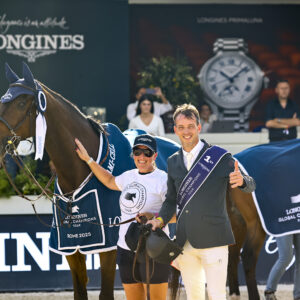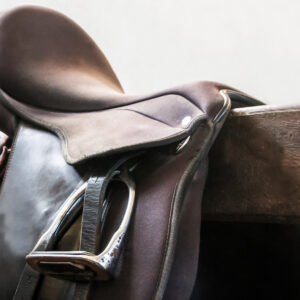Flying lead changes are on my short list for True at this point in his training.
We’ve been doing a lot of simple changes, shortening the number of trot steps gradually, and he will now switch leads with only one trot step between. Perfect timing to ask for the fly! This morning, we cantered around on the right lead, circled toward the rail, I asked for the left lead with my right leg and, sure enough, he switched in the air perfectly. I am so proud!
Well, okay. I would be proud if this actually happened. Actually, I should have been teaching True flying changes last year but life got in the way. During that extra year, True came to the conclusion that changing leads is never, ever allowed while cantering. A good young horse is supposed to canter along at a steady pace “for-e-ver,” maintain the lead, and stop hopping around!
On this note, let me recommend a hilarious blog post from Sara Bradley, “The Five Stages of Learning Flying Changes”. I don’t know Ms. Bradley, but she’s made an accurate connection between a horse’s development of flying changes and Elisabeth Kubler-Ross’s five stages of grief. You know: denial, anger, bargaining, depression, acceptance. True is firmly in denial at this time. He really does only take one trot step in the simple change now. But the notion of cantering through the change is beyond his imagination.
Frequent readers will know that my usual technique of teaching a new maneuver begins by ensuring the horse is ready. For flying changes, a horse needs to:
· show that he can change leads freely at a canter while unmounted.
· perform instant canter departs from trot and walk.
· get the correct lead every time, showing he knows the cues for it.
· be strong enough in the hindquarters to transfer his body weight and lift his front end briefly.
I began working on these preps as soon as the snow melted off the arena. True changes leads on his own when playing in his pasture or loose in the arena. Under saddle, he is now able to depart into the canter from a walk or halt pretty consistently, and his leads are always correct—they have been for two years.
But I have to say, True’s a little weak in the hindquarters and a bit resistant to transferring his weight back there. Enter Janet’s Brain-Based Butt Routine, which is not brain-based at all. It’s just an exercise program. All winter, we walked fast up long hills, an excellent way to strengthen hamstrings and gaskins. Trotting up long hills is even better, but our footing isn’t good enough. Arena trotting in deep sand builds stifles—we’ve been doing a lot of that, with engagement of the hindquarters and rounding of the topline at the same time.
Canter departs themselves strengthen the hind end, especially from the halt. We’ve done some unmounted rollbacks in the round pen, and some mounted turns on the haunches in the arena. Simply backing up at the walk helps, too. We’ll continue all these exercises, but already I can see some definition and feel more muscle in True’s back end…if only it would transfer to mine, too!
He is now ready to do flying changes, and I have asked for them five or six times in the past few days. Nope. He is so convinced that leads cannot be changed on the fly that he sometimes refuses the turn to the new direction.
As if to say, “Look. The right lead means we are turning right. We have to continue turning right. Why are you suddenly turning me to the left? Here, Janet, let me show you how to circle to the right.”
Denial! I’ll keep you posted on our progress.
Related reading:
- The Bareback Years
- Ground Manners
- “Don’t Think About It”—Yeah, Right
- Sharing the Arena
- The Perfect Flying Change
Janet Jones will present “Brain to Brain: Cross-Species Communication between Horses and Riders” at the World Equestrian Center in Ocala, Florida, on March 14, 2024. Come to the talk and enjoy the international Winter Spectacular Hunter/Jumper Horse Show too. Learn more and reserve your tickets at https://janet-jones.com/product/janet-jones-ticket-sales.


 February 14, 2024
February 14, 2024 

























